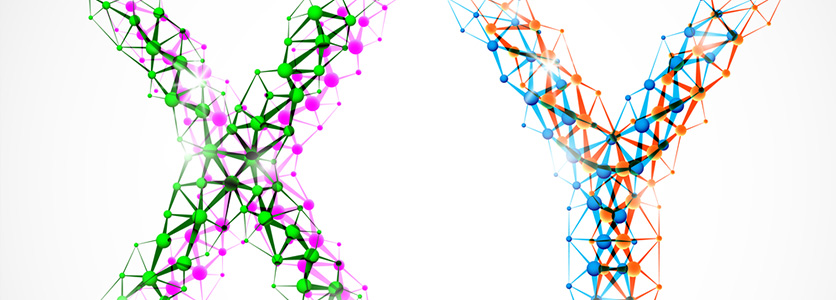30 March 2020
•4 minute read
What You Should Know About Female DNA
Can you use your DNA as an excuse for your thoughts and behaviour? Find out what our expert shares about the female and male DNA.
Back to basics
Firstly, let us ponder on that word, ‘female’. This word could be used for both ‘gender’ and ‘sex’. The female gender refers to the feminine characteristics which are mostly influenced by society. The female sex however is biologically determined. However, the terms sex and gender, for both male and female are usually used interchangeably.
Human beings are made of cells. All cells except for reproductive cells, have 46 chromosomes. Those 46 chromosomes are arranged in pairs hence we have 23 pairs in each cell. Out of the 23 pairs, 22 are called autosomes and the last pair is called sex chromosomes.
Life with one less X
The X and Y chromosomes are sex chromosomes. They determine a person’s sex. We were taught in our secondary school that men are XY (written as 46XY), women are XX (written as 46XX). Research suggests that some female babies can be born with a single X (45X) instead of two. They are known as Turner Syndrome. A baby who has Turner syndrome usually grow up with a short stature, with a heart shaped face, has webbing of her neck, possibly has a heart lesion and elbow deformities as well as a poorly developed gonadal/reproductive tract.
A fetus can also have only one Y, without an X chromosome (45Y). However, this genetic combination is not compatible with life. Clearly the X chromosome is needed for survival.
Females with a Y
Some fetuses are born with more than one sex chromosomes. These are called sex polysomies, for example 47XXX. These babies will grow up to be tall females with normal mental development (unfortunately the extra X does not make one a Superwoman!).
There are also fetuses born with 47XXY. Even though the baby has a pair of X chromosome, the baby external appearance is of a male baby. This is because, the presence of the Y chromosome act as the main inducer for the male appearance (also known as the male ‘phenotype’). Another example will be an individual with 48XXXY, who will also have a male phenotype due to the presence of a Y chromosome.

Male at birth
Klinefelter’s Syndrome refers to 47XXY. Even though they are born as male babies, as they grow older, their testes will not be well developed and there will be no production of sperm. The extra X chromosome is said to cause them to have less facial hair, less muscle mass and grow to be tall with breasts, broad hips and long legs.
In addition to all those genetic variations above, there are some males born 46XX. This is due to the translocation of a tiny section of Y chromosome onto the 46XX individual. Presence of the tiny section of Y chromosome is responsible for the development of testes in the embryo/fetus! Later, section of the Y chromosome will induce the external appearance of a male.
Two sexes in one body
Inversely, there are also some females born as 46XY. This occur because the Y chromosome suffer some mutation, hence fails to induce embryonic testes, as a result ovaries will develop instead! There are some individuals born with 46XY because they cannot respond to the hormone “testosterone” produced by their testes, as a result they will have all or some external appearance of a woman despite the male genes. This is known as ‘Androgen Insensitivity Syndrome’.
When an individual has both male and female sexual organs, they are known as hermaphrodite. Hermaphrodite: this word comes from two names of Greek God and Goddess, Hermes and Aphrodite. Theoretically, when cell divisions occur in the fetus, it is possible to have both cells of 46XX and 46XY in the same fetus. This is what they call mosaicism. As a result, the individual will have both male and female ‘apparatus’. Sadly, hermaphrodites are usually infertile, and thus they cannot impregnate themselves.
It’s never straightforward!
Clearly sex is complicated, yet beautiful. Gender, in my mind, is the perfect example of nature versus nurture. All these amazing variations of combinations of the sex chromosomes humbly show us the infinite diversity of life. Always remember that not all females are XX and not all males are XY. Each of us are being influenced by our own unique internal genetic materials and the orchestra of hormonal balances as well as many external developmental and environmental factors.
Dr Norintan Zainal Shah is a consultant obstetrician and gynecologist at Columbia Asia Hospital – Seremban
Share:
Was this article helpful?
30 March 2020
•4 minute read
What You Should Know About Female DNA
Articles and Video
Learn more about Obstetrics And Gynecology in Columbia Asia
Learn MoreShare:
Was this article helpful?
Health Packages
Elevate your health with tailored health packages at Columbia Asia Hospital. Take charge of your health journey today.
AIA Policyholders Self-pay Benefits
Pink October 2024
From
RM80

